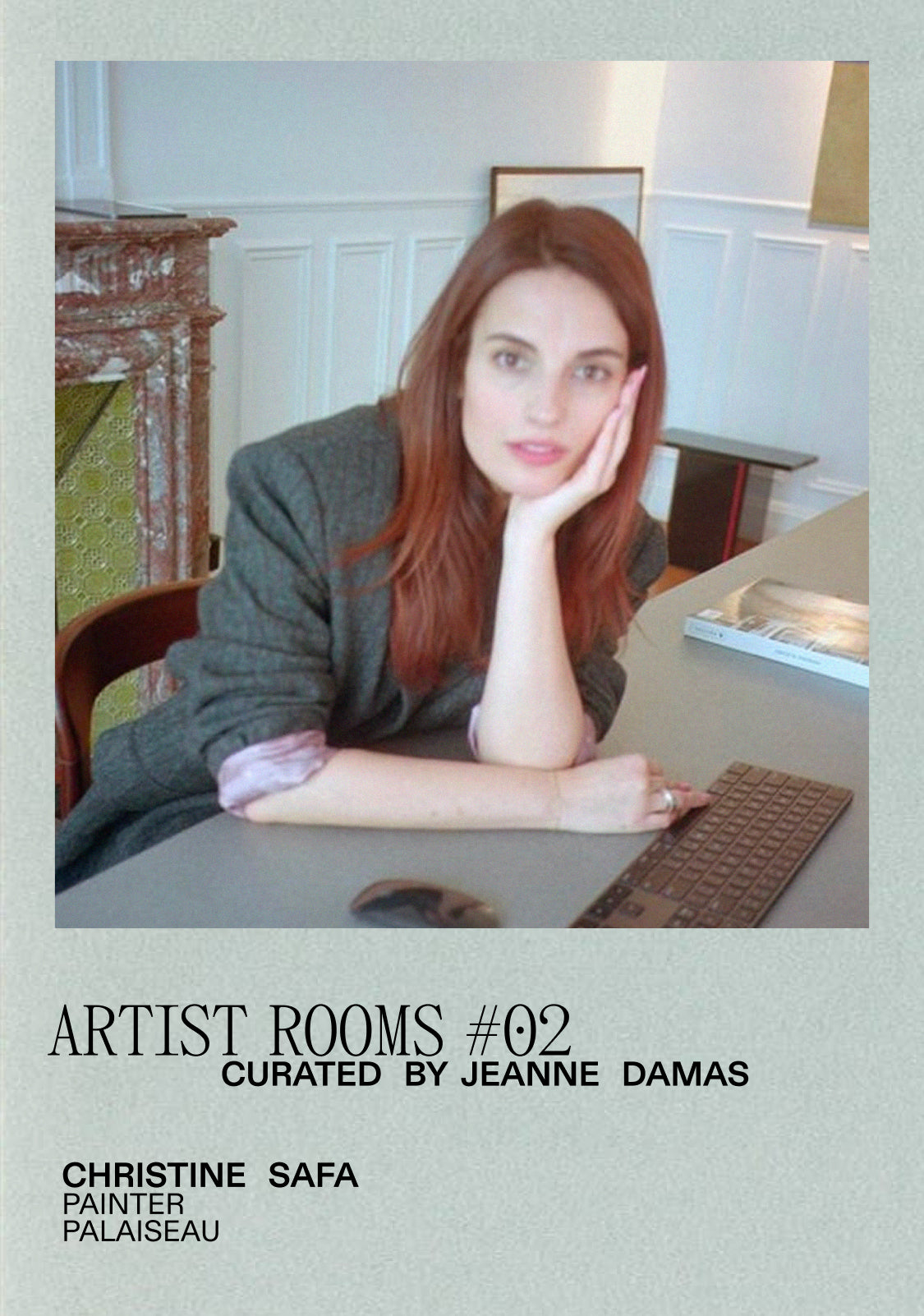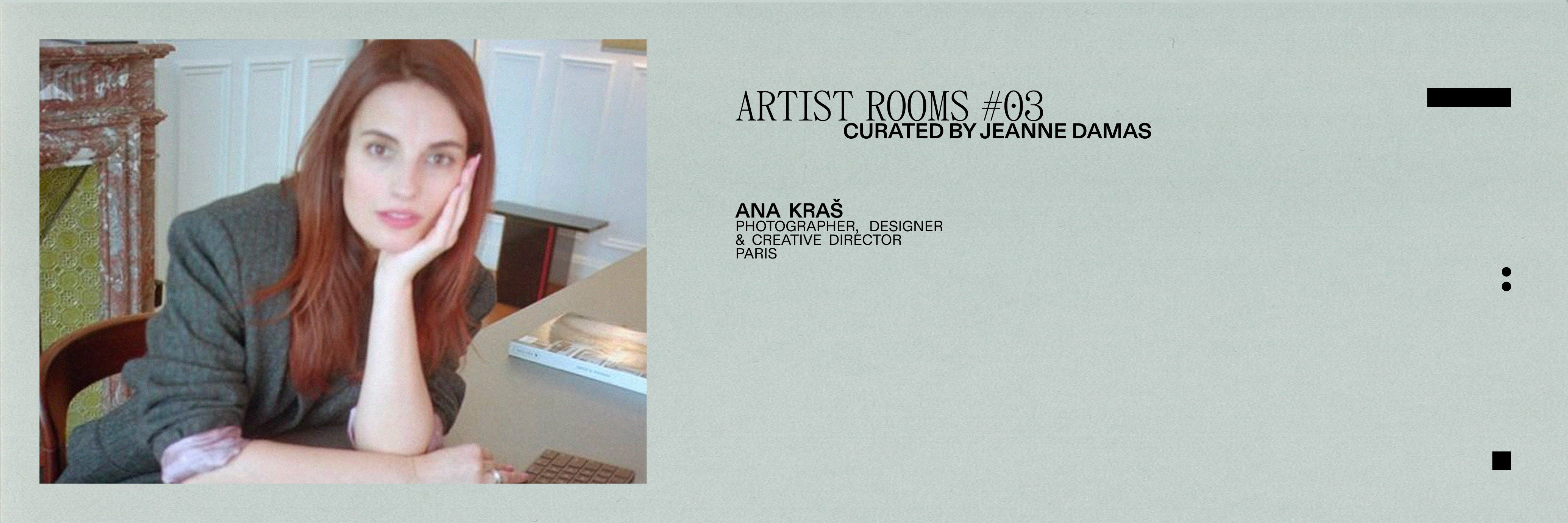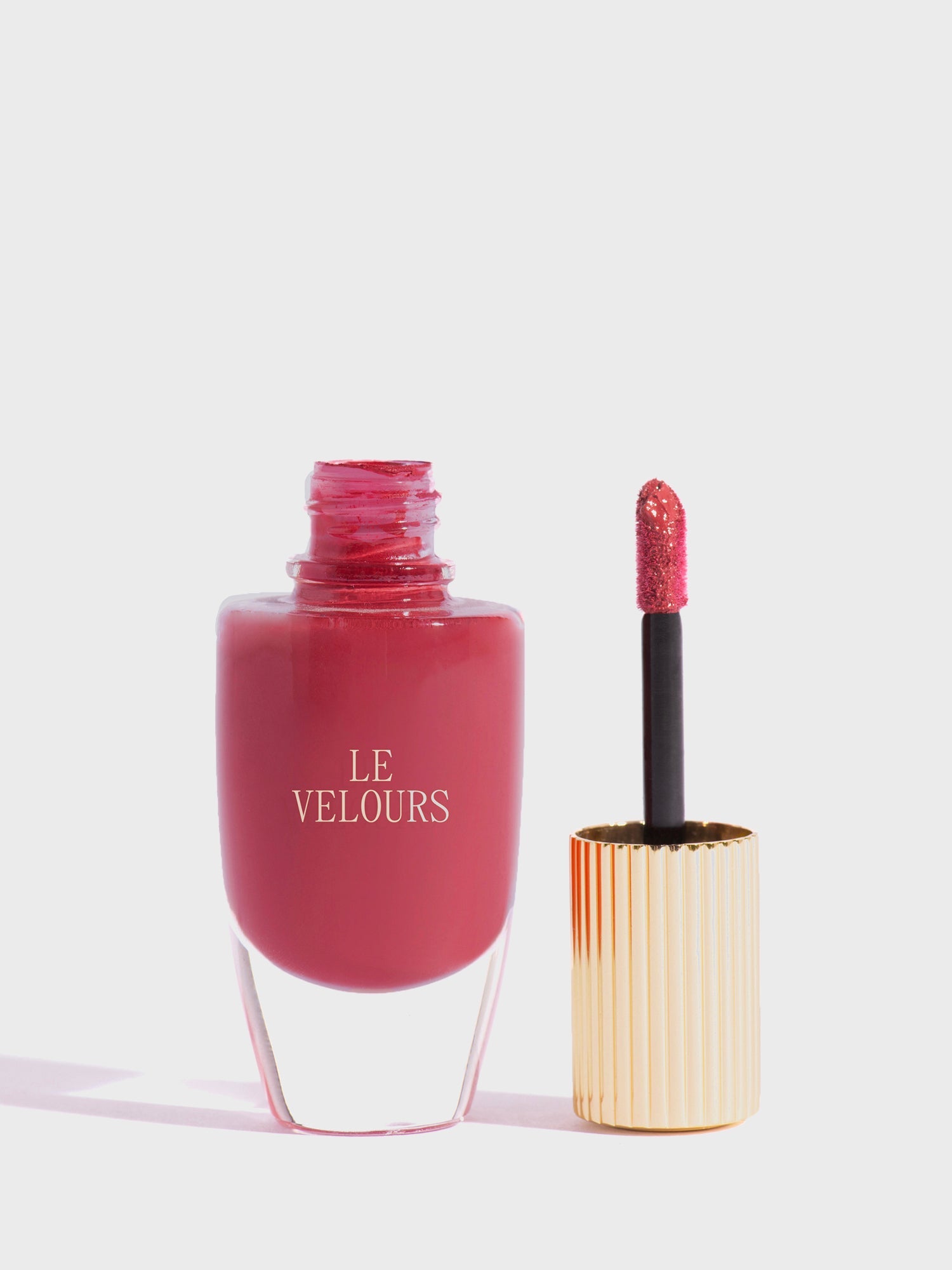

Jeanne Damas rencontre la peintre française d’origine libanaise Christine Safa dans son atelier en banlieue parisienne. Lauréate du prestigieux prix Jean-François Prat 2025, Christine a montré récemment ses toiles chargées d’émotion à New York et au Musée d’Orsay lors de la journée des peintres.
INTERVIEW
JD : Ton travail parle beaucoup de l’intime, de tes voyages ou de tes souvenirs : c’est quelque chose qui me touche beaucoup. Comment as-tu commencé la peinture ?
CS : Je crois que je fais de la peinture depuis toujours, en tous cas depuis l’enfance. Dès que j'avais le temps de faire autre chose qu'étudier, je faisais de la peinture et du dessin.
JD : Au Liban ?
CS : Je suis née en France et j'ai grandi en banlieue parisienne. J'allais au Liban quatre fois par an, à toutes les vacances ou presque. J'ai passé beaucoup de temps là-bas. Comme à tous les enfants, on m’a donné des crayons pour m’occuper. Je dessinais tout le temps. Plus tard, je n’ai pas eu de pression de mes parents pour faire quoi que ce soit comme études. Ils ont juste dit ; fais ton bac et après tu verras ce qu'il te plaît.
JD : Tes parents sont artistes ?
CS : Mon père est dans les assurances, ma mère à une formation d'aide d’éducatrice spécialisée. Ils ne sont pas du tout dans le monde de l'art. Au Liban j'ai peut-être une tante ou deux qui aiment l'art, mais ce n'est pas quelque chose
qu'on m'a vraiment transmis. Par contre il y a beaucoup d'images religieuses, beaucoup de statues de Vierge, d'icônes au Liban. Il y a aussi beaucoup de ruines, ce qui a dû me forger d’une certaine manière. Aujourd’hui encore, j'aime regarder les vestiges, les anciennes civilisations du Moyen-Orient.
Après le bac, j’ai eu envie de faire une prépa aux écoles d'art. Ça m’a permis d’intégrer les Beaux-Arts de Paris pour cinq ans.


IMG #02
la table de Christine avec quelques de ses livres qu'elle consulte souvent : Fra Angelico et Giotto ainsi que le catalogue d'une de ses expositions

IMG #03
détail d'un tableau en cours de réalisation :
Christine et son fiancé Nathan
JD : C’était comment cette expérience ? C’est très cadré ?
CS : C’est très libre, donc soit tu te cadres toi-même, soit tu te perds et tu arrêtes. C'est une école où l’on apprend tout en même temps. Y compris à se connaître ! J'étais très réservée en y entrant, j’étais encore jeune, je n’avais que 18 ou 19 ans. Je suis enfant unique et j’étais très préservée. Pour moi, les Beaux Arts ont été une ouverture sur le monde que je ne connaissais qu'à moitié.
JD : Comment ça ?
CS : Je me suis beaucoup cherchée, à la fois en tant que
personne et en tant que peintre. Au début, j'avais un travail
qui était un peu plus politisé. J'étais rentrée aux Beaux-Arts avec un travail qui parlait beaucoup du Liban, de la guerre, des choses qui ne m'appartenaient pas vraiment au final, puisque j’y étais pendant les vacances. Évidemment il y avait une grande part de tristesse, mais j’avais toujours la possibilité de pouvoir rentrer en France. Aux Beaux-Arts on m'a très vite dit qu’il fallait que je parle de tout ce qui se passe au Moyen-Orient.
JD : Que ton travail soit plus engagé, plus politisé ?
CS : Je ne sais pas si c’était une nécessité. Mais pendant deux ans, mon travail était un peu axé autour de tout ça, de la guerre, d'images assez crues. Au fur et à mesure,
avec mes rencontres à l'école, j'ai compris que ma simple présence dans cette école-là, était déjà un acte politique. Ma rencontre, par exemple, avec la peintre Nathanaëlle Herbelin qui est israélienne. Ce n'est pas en vivant au Liban ou dans un cercle beaucoup plus fermé à Paris que j'aurais pu croiser sa route. Elle avait deux, trois ans de plus que moi. J’étais fascinée par son travail mais aussi par son cheminement, un peu similaire au mien.
JD : Ces rencontres ont eu une influence sur ton travail ?
CS : Je me posais la question : faut-il peindre littéralement ce qu’il se passe dans cette région du monde ou est ce qu'on peut se permettre de peindre autre chose. Pourquoi je ne m'autoriserais pas cette honnêteté - de peindre des choses qui sont plus moi, mon propre vécu et non ce que je pense être attendu. Je ne suis pas journaliste. Donc ce n’est pas mon travail de pointer du doigt l’actualité. J'ai grandi en France, le Liban, j’y vais parce qu’il y a la famille. Il y a beaucoup d'amour, beaucoup de soleil, beaucoup de joie. En même temps, il y a cette contradiction. Je sais que c'est un pays marqué par une histoire grave. Soit j'y suis et je
partage ce que les gens là-bas vivent au quotidien, soit je suis ici et je vis par procuration. Un chagrin qui s’hérite malheureusement de famille en famille.
"Je me posais la question : faut-il peindre littéralement ce qu’il se passe dans cette région du monde ou est ce qu'on peut se permettre de peindre autre chose."
Christine SAFA
JD : Comment as-tu vécu cette dualité en grandissant ?
CS : En tant que libanaise, j'ai accepté cette transmission là. J'ai eu la chance de grandir ici avec cette autre culture aussi. J'ai traversé des phases où je ne me voyais que française, d’autres que libanaise. Mon équilibre entre les deux est finalement assez récent.
JD : Ce sont tes parents ou tes grands parents qui sont venus en France ?
CS : Mes parents. C'était en pleine guerre du Golfe, mon père travaillait déjà en Arabie Saoudite. Ils sont mariés et ils ont vécu un an en Arabie saoudite avant que mon père n’accepte un poste en France. Ils n’y sont pas retournés pendant un moment, maintenant ils vivent entre les deux.
JD : Leur cœur est toujours au Liban ? Ils y retournent souvent ?
CS : Oui, mes parents y étaient en septembre et on dû rentrer un peu en urgence avec ce qui se passe en ce moment. Ils ont passé quatre mois au Liban. Les quartiers chrétiens ne sont pour l'instant pas ciblés. En revanche, ils ont entendu les détonations. Ils les voient. C'est comme une habitude triste. Aujourd’hui, c’est plus fort que dans le passé : les
armes sont beaucoup plus techniques, toujours plus énormes. Depuis mon enfance,
on n'a jamais quitté le Liban en se disant c'est bon, on y retourne dans deux mois, il n'y aura pas de problème. Quand
on le quitte, on ne sait jamais quand on va le revoir. Je pense que j'ai créé un lien avec le Liban car j’ai vu mes parents aimer ce pays et la déchirure quand on le quittait.
JD : Ça doit être très marquant.
CS : Mes parents ont toujours parlé du Liban d'une manière magnifique. J'ai voulu rendre hommage à ce pays en
peignant des choses qui m'appartiennent vraiment, de mes souvenirs de là-bas. J'ai très vite essayé de faire davantage de paysages du Liban.
JD : Ça se sent beaucoup dans les couleurs, les teintes sont pleines de chaleur.
CS : Au fur et à mesure, j'ai compris que j'ai aussi une grande part de ma vie ici en France. Depuis un moment, je pense qu'on voit aussi des couleurs un peu plus neutres ou juste différentes de celles que j'utilisais avant. On pouvait un peu me mettre une étiquette orange, bleu, rouge.

IMG #04
Christine Safa à sa table de travail


IMG #05
Christine parmi ses tableaux en cours de réalisation

IMG #06
détails des tableaux en cours
JD : Ce sont aussi des phases, non ?
CS : Avec mon fiancé Nathan, qui est peintre aussi, nous avons passé quatre ou cinq mois dans une résidence pas loin d’ici en pleine campagne, avec beaucoup de vert. Je ne peins pas vraiment de ce que je vis sur le moment. Ça vient souvent après coup.
JD : Tu peins beaucoup de mémoire ?
CS : Il y a beaucoup d'images que je prends en photo, je peux avoir des inspirations dans des livres aussi.
JD : C'est pour avoir plus
d'espace et de liberté après ?
CS : J'ai compris depuis l'école que quand je me renferme dans une image trop fixe je me perds vite dans des détails pas forcément intéressants. Je parle beaucoup des mêmes sujets aussi pour avoir une version nouvelle à chaque fois et m'autoriser un peu plus de liberté. Je ne veux pas avoir qu’une seule manière de peindre. Je peux faire un portrait réaliste, un autre beaucoup plus flou, plus épuré. Et aussi juste me satisfaire mentalement et me dire que je n’ai rien raté.
Tu peux avoir différentes versions de cette même peinture qui sont chacune très bien. Je peux mélanger le figuratif et le fou. Ne pas devoir prendre de décision m'aide à m’accepter. Si cette version-là, elle est trop poussée ou trop littérale, je peux avoir la même version mais beaucoup plus évocative. Les deux peuvent me plaire, en tant que peintre et en tant que public.
JD : Quels peintres te parlent le plus ?
CS : J’aime des peintres comme Fra Angelico ou Giotto. Des moines de la Renaissance - à côté de ça je peux aimer des choses beaucoup plus abstraites comme Rothko, des peintres américains plus épurés.
JD : Tu avais déjà des notions d‘histoire de l’art ou tu as tout appris aux Beaux-Arts ?
CS : Je ne savais rien. Je me rappelle très bien qu’un jour en terminale un prof parlait de Jeff Koons que je ne connaissais pas et je me sentais très mal.
JD : En même temps tu n’as pas baigné dedans.
CS : Oui, je connaissais les classiques comme van Gogh.
"Mes parents ont toujours parlé du Liban d'une manière magnifique. J'ai voulu rendre hommage à ce pays en peignant des choses qui m'appartiennent vraiment, de mes souvenirs de là-bas."
Christine SAFA
JD : Ton fiancé Nathan Bertet est peintre aussi. Vous travaillez à côté ?
CS : Il travaille dans un atelier a quelques minutes en vélo d’ici.
JD : Vous parlez beaucoup de vos pratiques respectives ?
CS : Oui, c'est vraiment une relation qui s'est nouée autour de Beaux-Arts. La drague, les discussions…
JD : Il s’en passent des choses là-bas !
CS : C’est presque Secret Story (rires).
JD : Il y a toute une génération de jeunes peintres en ce moment, il y a une vraie scène qui s'est formée. Vous êtes tous proches ?
CS : On est tous proches, comme un petit noyau sur lequel chaque personne a d'autres petites branches. En fait, nous sommes plus nombreux, mais en soi il y a vraiment un tout petit noyau qui est mis un peu en lumière en ce moment. C’est ce que fait très bien Nathanaëlle. Elle essaye de mettre en lumière nos autres copains qui le sont un peu moins. Car on ne fait rien tout seul et tout ce qu'on fait là individuellement a été forgé dans cette école d'une manière totalement anarchique. On a traversé tant de choses ensemble. Je ne peindrais pas comme je peins aujourd’hui si je n'avais pas rencontré Nathan (Bertet), Nicolas (Gaume), Nathanaëlle (Herbelin).
JD : Quand est-ce que tu as passé ton diplôme ?
CS : Il y a six ans, Nathan l’année dernière. Nicolas il y a trois ans je crois ? On s'est tous croisés et ça a créé des discussions, des remises en question, des retrouvailles. C'était sympa d'avoir des gens, des amis et des artistes qui ont la même manière de penser, qui ont les mêmes goûts, ou pas parfois pas. On a des sensibilités similaires, les mêmes gens qu'on vénère un peu et chacun a son petit truc à côté que l'autre ne va pas forcément aimer, mais c'est comme ça qu'on se différencie au final.

IMG #07
tableau des tournesols, w.i.p
"Je parle beaucoup des mêmes sujets aussi pour avoir une version nouvelle à chaque fois et m'autoriser un peu plus de liberté. Je ne veux pas avoir qu’une seule manière de peindre. Je peux faire un portrait réaliste, un autre beaucoup plus flou,plus épuré."
Christine SAFA

IMG #08
les tournesols séchés, un cadeau d'une amie, qu'elle peint souvent
JD : Tu travailles sur quoi en ce moment ?
CS : Je prépare une exposition à la galerie Lelong pour l’automne 2025. C'est une exposition personnelle. Chaque fois, j'essaie d’avoir minimum un an pour préparer l'exposition. J’ai besoin de temps pour la penser. Il faut que je travaille, les peintures ne se font pas en un mois.
JD : Tu y travailles depuis quand ?
CS : J'ai fait une expo à New York il y a quelques mois. C’était une grosse exposition, mon premier solo aux US. J'ai besoin de temps entre chaque grosse exposition car elles s’ajoutent aux expos collectives, aux foires. C'est normal de devoir sortir des peintures de l'atelier tout au long de l'année. Donc, en parallèle, je leur demande d'avoir quand même une grosse année pour peindre.
C'est que quelques mois avant l'exposition que je sais quelle peinture je vais montrer.
JD : C'est assez libre ? Il n'y a pas de thème, ou tu peux le choisir ?
CS : Ils me laissent travailler. Moi-même, je ne sais pas ce que je vais montrer.
JD : Il y aura des peintures que tu n’as jamais montrées ?
CS : Oui, quand c'est en galerie ce sont vraiment que des nouvelles peintures.
JD : Ils en demandent combien ?
CS : L'espace est assez grand. J'en donne 10, 15. Il y a ce double portrait qui en fera partie et il y aura ce deuxième
derrière. Je n'ai pas encore commencé, mais elle sera du
même format.
JD : Est-ce que tu as le syndrome de la toile blanche ? Un peu comme les écrivains avec la page blanche ?
CS : J'essaye de pas me retrouver sans rien à l'atelier. Dès qu'il y a une grosse vague de peintures qui partent d'atelier pour une exposition, j’essaie d'avoir des toiles en cours. Pour pouvoir enchaîner, pour que tout soit plus fluide. C'est quelque chose que j'ai appris depuis la fin de l'école, il ne faut pas que je me retrouve sans rien.
Les tableaux courtesy Christine Safa et Galerie Lelong & Co


IMG #09
autoportrait à la tempera, des livres de Pierro della Francesca et Giotto :
des peintres de la renaissance qui l'inspirent beaucoup
Plus d'ARTIST ROOMS




